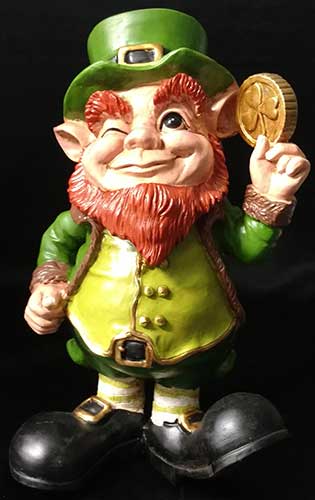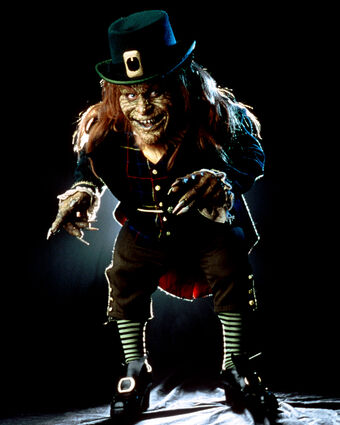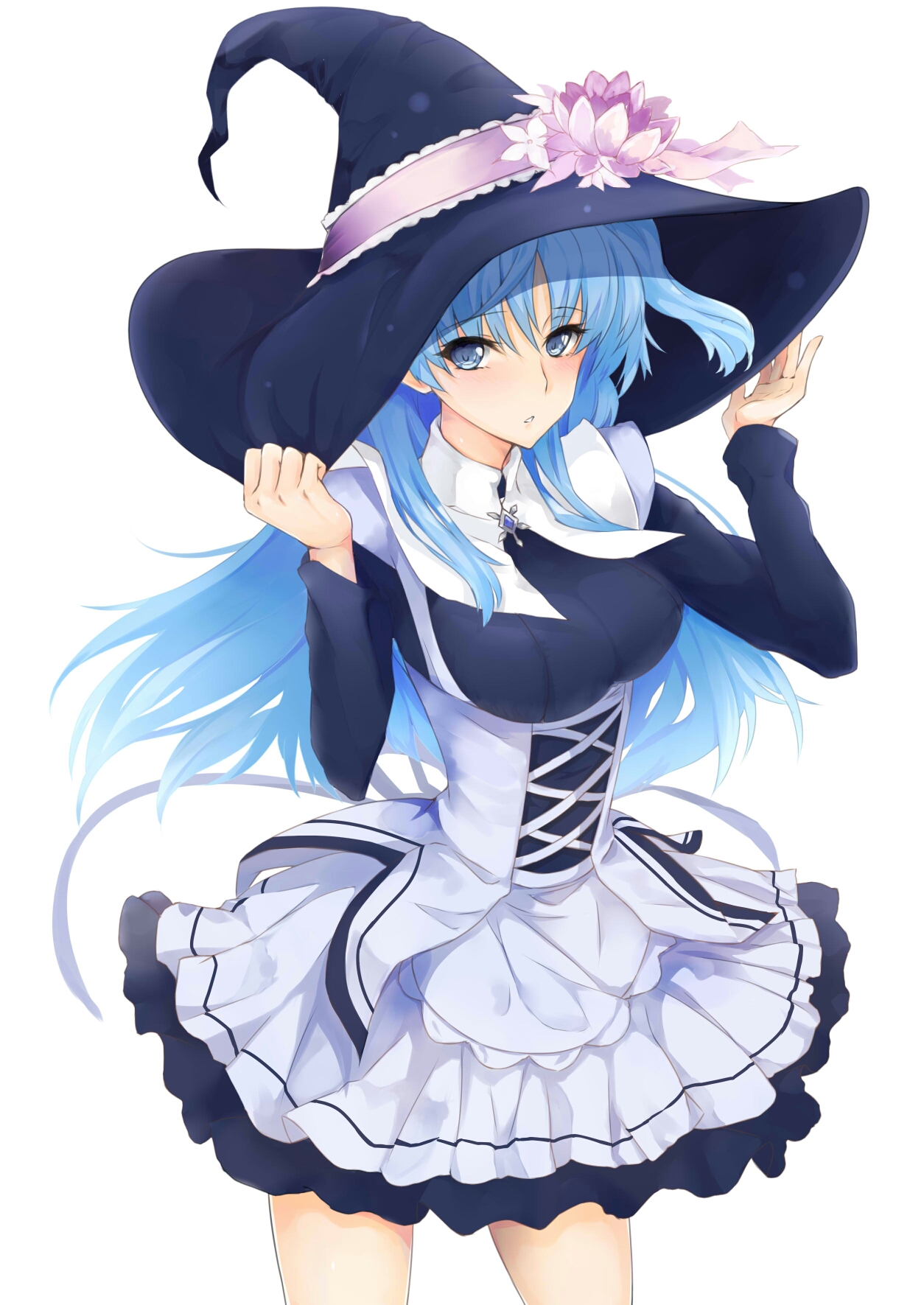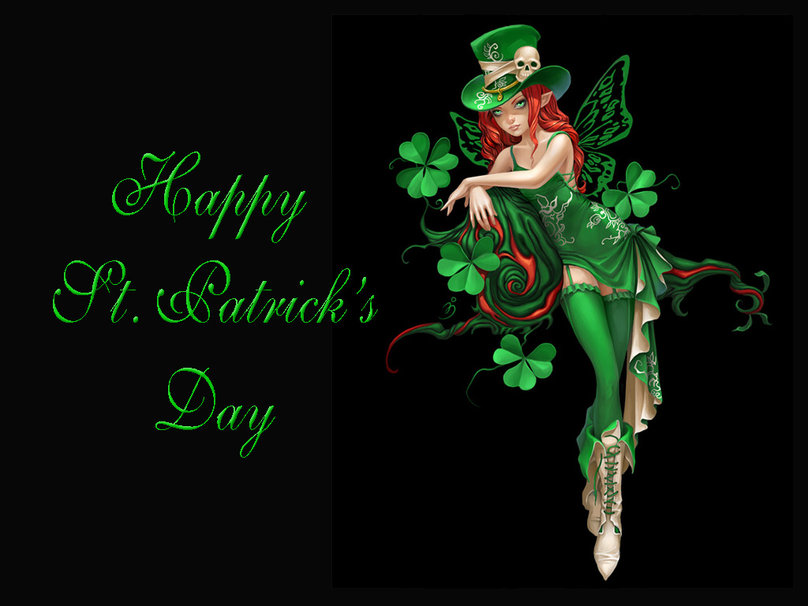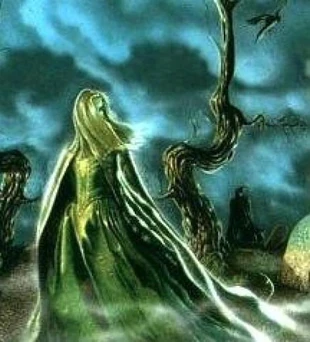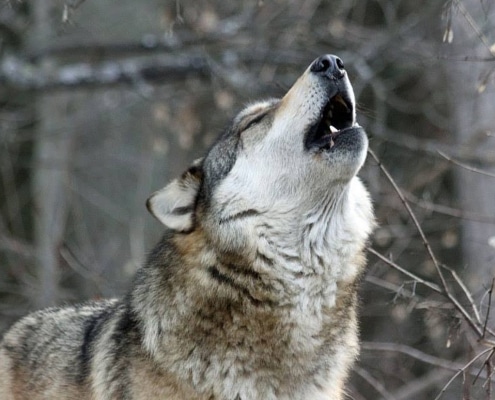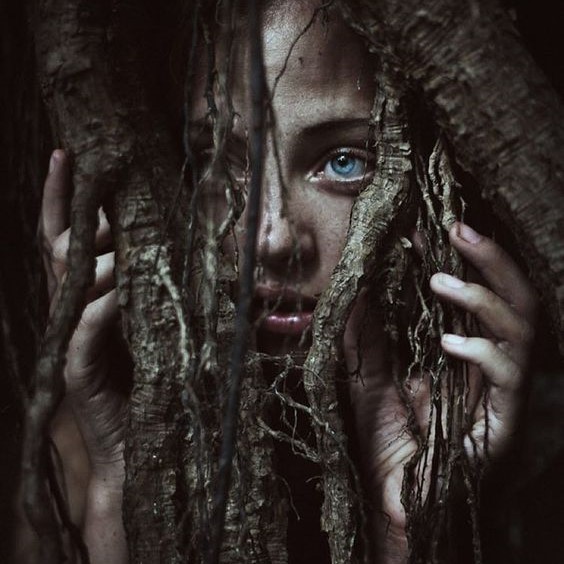The Sylph..
============================
//////St Patrick's day is March 17th so March is going to be all about the Little People, Pixie's, Fairy's, Spirits,.. Leprechauns ect ...
==============================
The Sylph...
A Wind Sylph is a type of Elemental being associated with Air/ wind.
The Sylph has appeared in many classic and modern forms of literature, Theater, TV and Games.
Some examples are the board game Dungeons and Dragons . and a Japanese Anime and Manga called The Ancient Magus Bride. even the Ariel from William Shakespeare: The Tempest.
The word sylph is possibly a portmanteau (Blend of Words) derived from the Latin sylvestris and nympha
sylvestris being a common synonym for sylph in Paracelsus. Anthon and Trollope note a similar usage in the Aeneid where
silvestris is taken as an elliptical form of
nympha silvestris ("forest nymph").Jacob Grimm (Of the Brothers Grimm ) uses this phrase as a gloss for the Anglo-Saxon
wudu-mær (roughly equivalent to "woodmare"), which he also takes as a metaphorical name for an echo
===========
Sylph's in DnD lore ..
============
Sylphs are beautiful, humanoid women with wings like dragonflies. Their
wings are 4-5 feet long and translucent, clear, or spotted with
iridescent color. Their long, bright, hair may be any “normal” color, or
blue, purple, or green. They wear flowing, diaphanous robes which
accent their wings or hair. Sylphs are related to air elementals and nymphs, possibly even originating as a cross-breed between nymphs and aerial servants. They speak Common and their own musical language.
-------------------------------------

Image from pintrist art by Paizo's Pathfinder. Corel Painter. (c) Paizo. Sylph
==========
===
=
In the 1778 British novel (The Sylph) a sylph appears as a guardian spirit for the female lead
----
The famous ballet La Sylphide "The (Female) Sylph", Paris, 1832) is a prominent example of sylph
lore in classic theater during the 19th century.
It appeared in a second version in
Denmark in 1836.
Other famous opera's of the 18th and early 19th century are The Mountain Sylph from 1834. Sylphs and the 1909 ballet Les Sylphides.

----------------
The Paracelsian concept of elementals is draws from several much older
traditions in mythology and religion. Common themes can be found in folklore all over the world.
Some examples of elemental creatures such as the Pygmy were taken from Greek Mythology.
The four main types of spirit elementals or earth, water, air, and fire, they are classed as the fundamental building blocks of nature.

-------------------
This system was highly influential in the development of medieval nature philosophy .
Although Paracelsus uses these foundations and the popular preexisting
names of elemental creatures, he is doing so to present new ideas which
expand on his own philosophical system. The homunculus is another example of a Paracelsian idea with roots in earlier alchemical, scientific, and folklore traditions.
The Alchemist Paracelsus

In his 16th-century alchemical work
Liber de Nymphis, sylphis, pygmaeis et salamandris et de caeteris spiritibus Paracelsus identified the mythological beings as belonging to one of the four elements. Part of the
Philosophia Magna, this book was first printed in 1566 after Paracelsus' death.
He wrote the book to "describe the creatures that are outside the
cognizance of the light of nature, how they are to be understood, what marvelous works God has created".

He states that there is more bliss in
describing these "divine objects" than in describing fencing, court
etiquette, cavalry, and other worldly pursuits.
The following is his archetypal being for each of the four elements: Earth, Water, Air and Fire..
Other Alchemist symbols

The concept of elementals seems to have been conceived by Paracelsus in the 16th century, though he did not in fact use the term "elemental" or a German equivalent.
He regarded them not so much as spirits but as beings between creatures
and spirits, generally being invisible to mankind but having physical
and commonly humanoid bodies, as well as eating, sleeping, and wearing
clothes like humans. Paracelsus gave common names for the elemental
types, as well as correct names, which he seems to have considered
somewhat more proper, "
recht namen".
He also referred to them by
purely German terms which are roughly equivalent to "water people,"
"mountain people," and so on, using all the different forms
interchangeably. His fundamental classification scheme on the first page
of Tractatus II of the
Liber de Nymphis is based on where the elementals live, and he gives the following names:
- Gnomes being of earth
- Undine being of water
- Sylph being of air
- Salamander being of fire
Gnomus, Undina and Sylph are all thought to have appeared first in Paracelsus' works, though
undina is a fairly obvious Latin derivative from the word
unda meaning "wave."
In
De Meteoris he referred to the elementals collectively as
Sagani.
He noted that undines are similar to humans in size, while sylphs
are rougher, coarser, longer, and stronger. Gnomes are short, while
salamanders are long, narrow, and lean. The elementals are said to be
able to move through their own elements as human beings move through
air. Gnomes, for example, can move through rocks, walls, and soil.
Sylphs are the closest to humans in his conception because they move
through air like we do, while in fire they burn, in water they drown,
and in earth, they get stuck. Paracelsus states that each one stays
healthy in its particular Chaos as he terms it, but dies in the others.
Paracelsus conceived human beings to be composed of three parts,
an elemental body, a sidereal spirit, and an immortal divine soul.
Elementals lacked this last part, the immortal soul. However, by
marriage with a human being, the elemental and its offspring could gain a
soul.
Because of their association with the ballet
La Sylphide, where sylphs are linked with fairies along with the medieval legends of fairyland, as well as a confusion with other "airy spirits" (e.g., in William Shakespeare's A Midsummer Nights Dream were a petite girl may be referred to as a sylph.
The word Sylph made it's way into general language as a term for minor spirits, elementals, or faeries of the air.
Some Sci-Fi and Fantasy authors will sometimes employ sylphs in their fiction, for example creating giant artistic clouds in the skies with fairy wings.
========
These month my post's will be regarding the wee folk, fairy's, gnomes, elf's and the like... hope you all enjoy :)
and
Thank you to those of you who share my posts much appreciated !
.jpeg)
-p162-Nuckalavee-illustr-J_Torrance_(cropped).jpg)



.jpeg)
.jpeg)
.jpeg)
.jpeg)

.jpeg)










